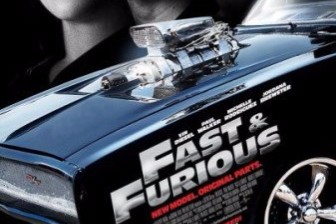New New York Times analysis finds that for MoCo drivers, ‘Fast and Furious’ is all too true

The first movie in the franchise, “Fast and Furious,” was released in 2001. Photo courtesy of Movie Poster Arena.
February 26, 2018
A recent New York Times analysis of nearly two hundred thousand Montgomery County traffic reports found that during the three weekends following the release of each “Fast and Furious” movie over five years, the average speed of ticketed drivers dramatically increased.
The study, released Jan. 30 and led by Associate Professor Anupam Jena of Harvard Medical School, analyzed 192,892 speeding tickets given out between 2012 and 2017 in Montgomery County. The team originally wondered about a link between glorifying speeding and speeding itself, which they tested by analyzing drivers’ speeding habits around release dates for the “Fast and Furious” movies, which dramatize illegal street racing.
The authors chose Montgomery County as their data source after weeks of searching through statistics from across the country.
“Montgomery County is actually the only county in the United States that publishes data on their traffic tickets with specific information like the speed the person was going,” Harvard research analyst Tanner Hicks, a co-author of the study, said. “And they’re the only county that has that data publicly available.”
Their research found that the speeds drivers were ticketed at increased nearly 20 percent, from an average of 16 mph to 19 mph over the posted speed limit. Additionally, speeding over 40 mph above the speed limit nearly doubled. These incidents were concentrated in areas near theaters and on Route 270, which is adjacent to several large theaters.
Some students who have seen the movies agree with the study’s findings.
“I feel like people will speed more after seeing the movie,” junior Alex Lohr said. Lohr plans to see the next film when it comes out.
However, others contest the belief that the movies will make safe drivers more likely to speed.
“I’ve seen all of them except the most recent one,” senior Priya Voetsch said. “And I’m a grandma when it comes to driving: I literally drive 5 miles per hour in a 20 mile zone.”
Despite the “Fast and Furious” movies’ extremes, Hicks says there’s no reason to worry about a de-facto remake on the streets of Bethesda.
“I wouldn’t say there’s too much to worry about,” Hicks said. “People might drive a little bit faster, but for the average citizen, I don’t think they need to be too worried.”






